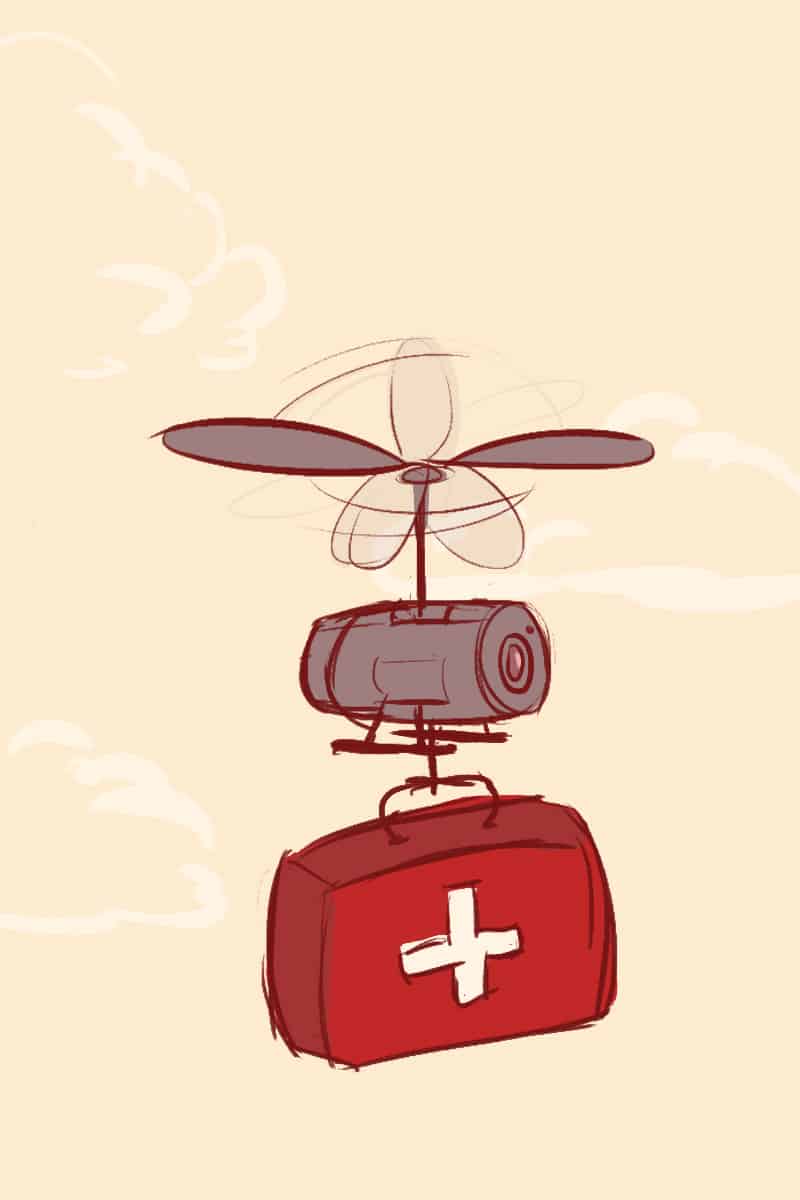When we think of drones, we typically think of the unmanned vehicles used by the military, which are capable of causing great harm. Can this vision of unmanned vehicles change? U of T’s Dr. Hugh Liu has set out to achieve just that.
Liu is a a member of U of T’s Institute for Aerospace Studies (UTIAS). Recently, he received a $1.65 million grant from the National Sciences and Engineering Research Council of Canada’s Collaborative Research and Training Experience program. The grant was awarded for the training of 150 experts to operate unmanned aerial vehicles (UAV) for a variety of real-life applications, ranging from agriculture to pipeline monitoring.
Liu founded the Flight Systems and Control (FSC) Research Laboratory at UTIAS, and he develops algorithms that interpret environemental inputs and then allow for the UAV to alter its flight perameters accourdingly. For instance, the vehicle’s height and speed could be measured and interpreted to determine how to maintain constant altitude. Some of Liu’s algorithms can be quite sophisticated, such as those that can be used to find the edge of a fire, giving UAVs the ability to accurately monitor and track the spread of wildfires.
This project is the inspiration for a startup created by Liu, and former graduate students at U of T, named Arrowonics Technology Ltd. The founders of the startup hope to commercialize their technology.
When asked for his opinion of Liu’s project to train experts to handle UAVs, third year Chemistry student Jace Gao said, “I think it’s a really cool project with a huge potential that can literally be applied to almost any fields.”
With the ability of UAVs to be applied to various situations and thus to save both lives and money, investing in their potential seems to be an attractive route to take.
When asked about the potential drawbacks and any dangers associated with this project, Neta Crawford, professor of political science at Boston University and expert on international ethics said: “I think this looks harmless. But of course any technology that one can buy off the shelf like this will eventually be weaponized by people with ill intentions.” But due to the training of experts to use UAVs in a safe and controlled manner, Crawford believes this will “[ease] the risks of nefarious uses.”
In an email, Liu indicates that there will be little danger with the project in terms of the devices themselves, writing: “The risk of flying vehicles is always related to its safety, not hurting people/property, not crashing itself either. Drones, when exploit[ed] for commercial applications, are expected to be operated by pilots with proper training.”
Liu believes the public is already aware of the potential of UAVs to better our lives, and regarding his future intentions to further communicate the benefits of UAVs he says that, “we plan to develop a TED conference lead by students to draw public awareness.”
Although UAVs themselves seem to be relatively safe devices under the operation of trained experts, the potential unintended consequences of the applications of UAVs is worth considering. Emmay May, a health and environment advocate in Toronto, raises questions about some possible risks of UAVs. She explains, “While the study may simply aim to explore beneficial new applications from ‘agriculture to environmental monitoring,’ other political and commercials agendas may come into play and the partnership model speaks to this. For example, what role can UAVs play [in] human surveillance?”
Emmay also points out the interesting allusion to pipelines in the U of T News article as a connection to the motives of fossil fuel industries. She believes other areas also deserve deeper exploration: “Might there be unintended consequences for wildlife as more drones take to the skies? Will drones displace certain types of jobs? While there will no doubt be practical gains, it appears that this UAV exploration will ultimately raise more questions than [it will] provide answers.”
There are benefits to, and reasons to be excited for, this project, but the potential for danger or misuse cannot be ignored.


